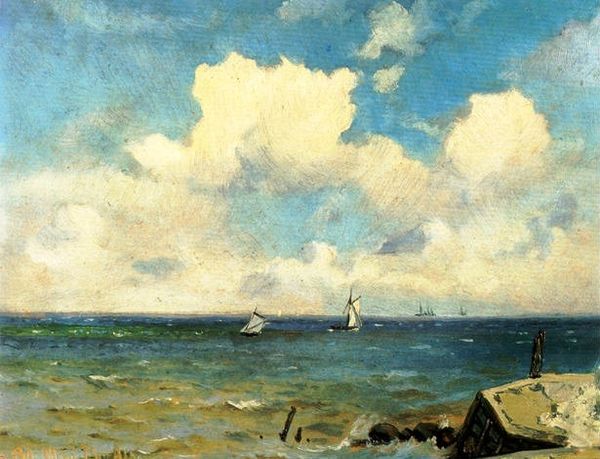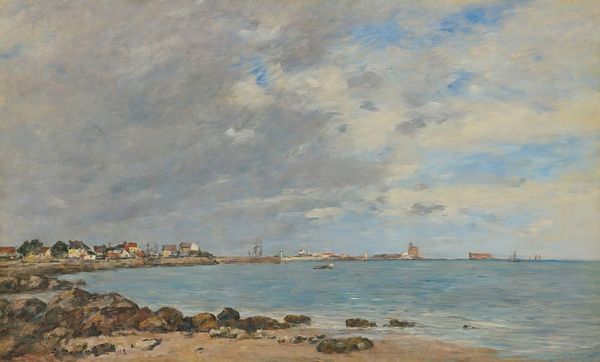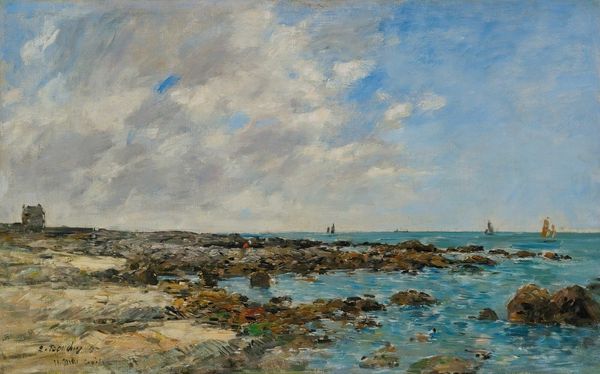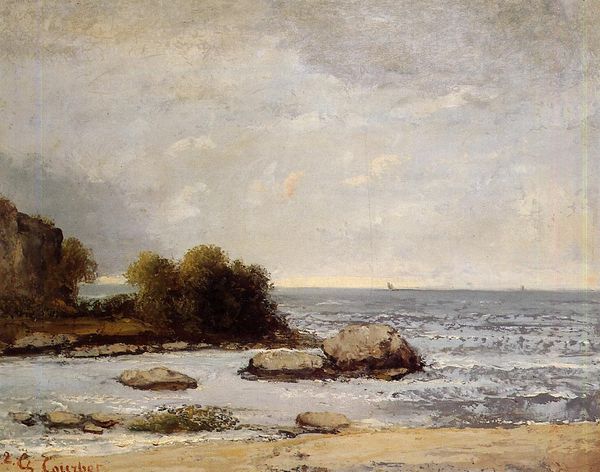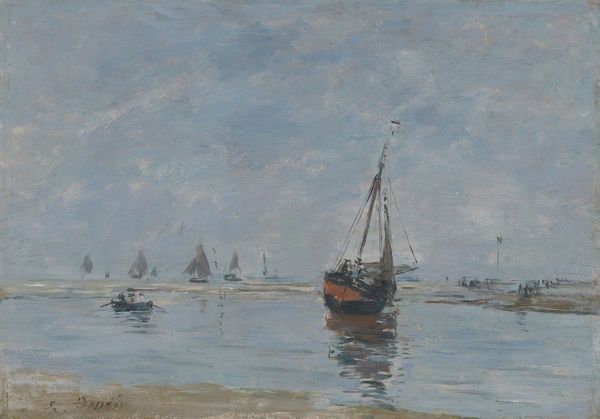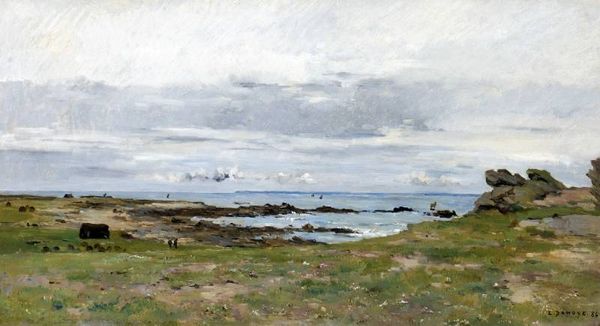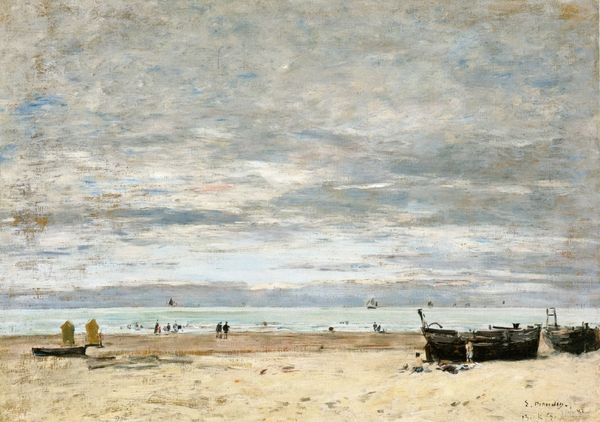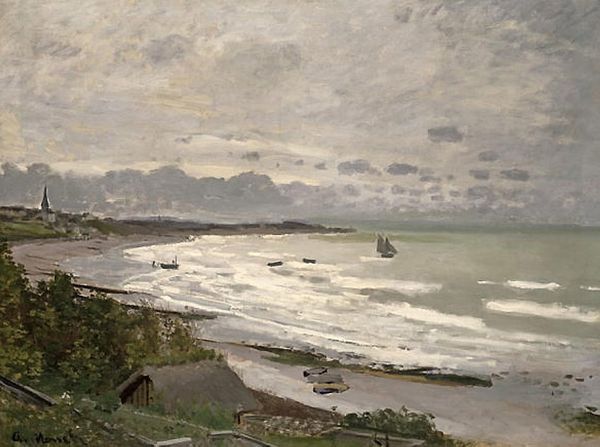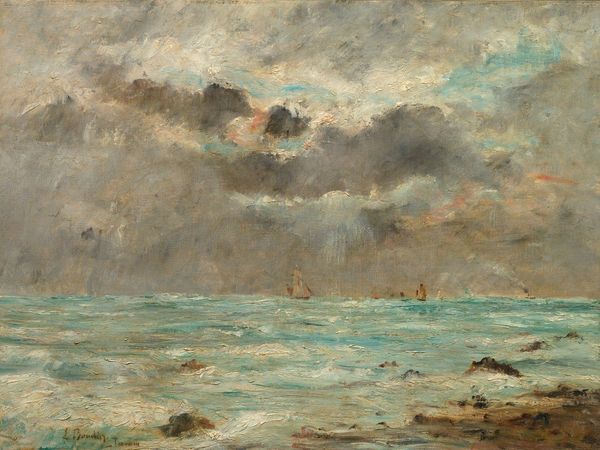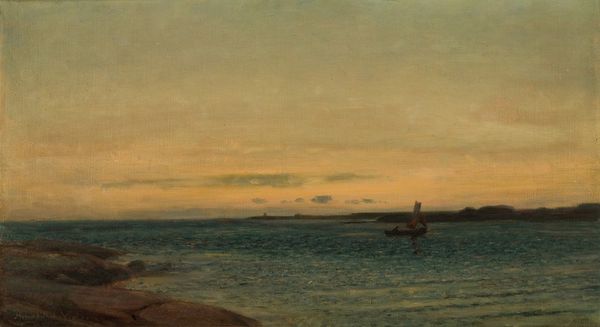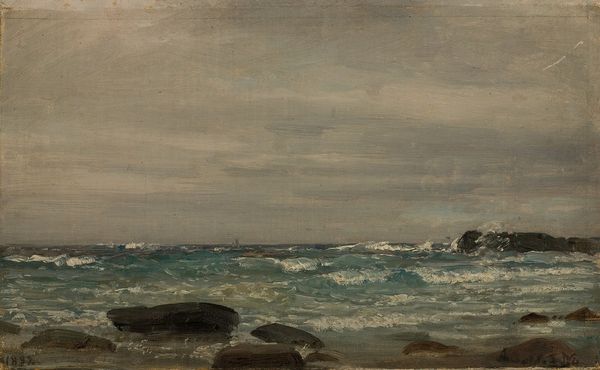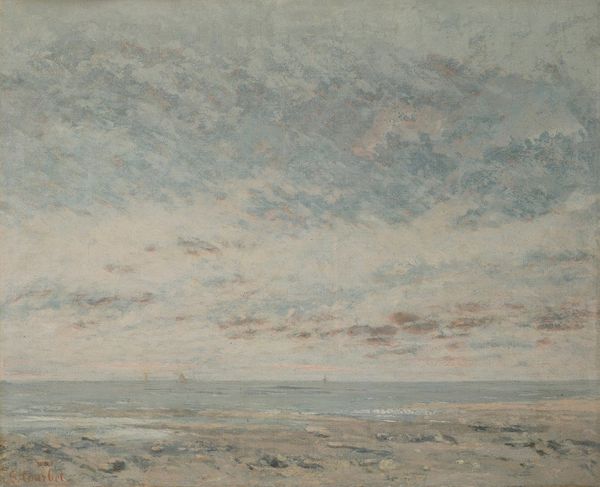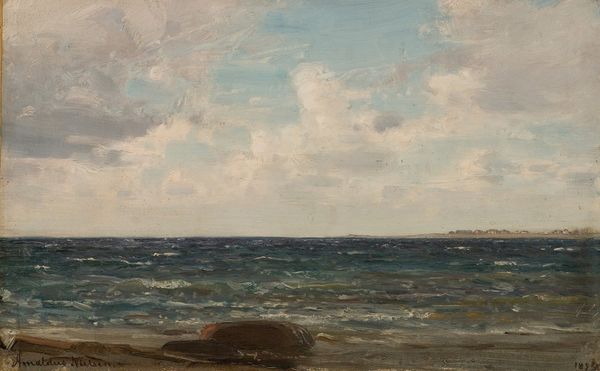
Copyright: Public Domain: Artvee
Curator: Eugène Boudin painted this work, “Marine à St. Vaast-La Hougue,” in 1892. It seems he was working en plein air, using oil paints. Editor: It has a melancholic feel. The muted greys and blues give a sense of quiet resignation. There's a stillness despite the implication of a vast ocean. Curator: Boudin was a precursor to Impressionism, capturing fleeting moments of light and atmosphere. Think about how the burgeoning industrial revolution transformed coastal areas in France, attracting artists like Boudin eager to document these changing landscapes. Editor: It also highlights the intersection of labor and leisure during this era. You've got the working fishing boats, yet the tone evokes a bourgeois detachment. The horizon feels strangely oppressive, almost as if the working class are permanently locked into this industrial horizon. Curator: But Boudin was known for portraying ordinary life, not necessarily critiquing the socio-economic conditions. He presented the seaside as he saw it. Perhaps his perspective offers a realistic representation without delving into critique. We see reflections of socio-economic tension, given that increased industrial activity coincided with strict labor practices. Editor: Yes, that makes sense. Even the composition directs our eyes to the cloud-filled sky. There's this interplay between the expansive sky and the somewhat clustered foreground. It almost minimizes the human element and their role, doesn't it? The horizon suggests their limits. Curator: Absolutely. Consider the burgeoning Realist movement and its effect on his work, presenting what existed around him instead of grand narratives. Editor: It's compelling to analyze the power dynamics embedded in seemingly innocuous scenes of daily life. His works allow us to see that relationship through our current moment in history. Curator: True. Ultimately, Boudin provides a rich study in visual documentation of his time. Editor: Definitely. His influence on painting, though seemingly subtle here, still sparks dialogues on labour and the environment in coastal France.
Comments
No comments
Be the first to comment and join the conversation on the ultimate creative platform.
